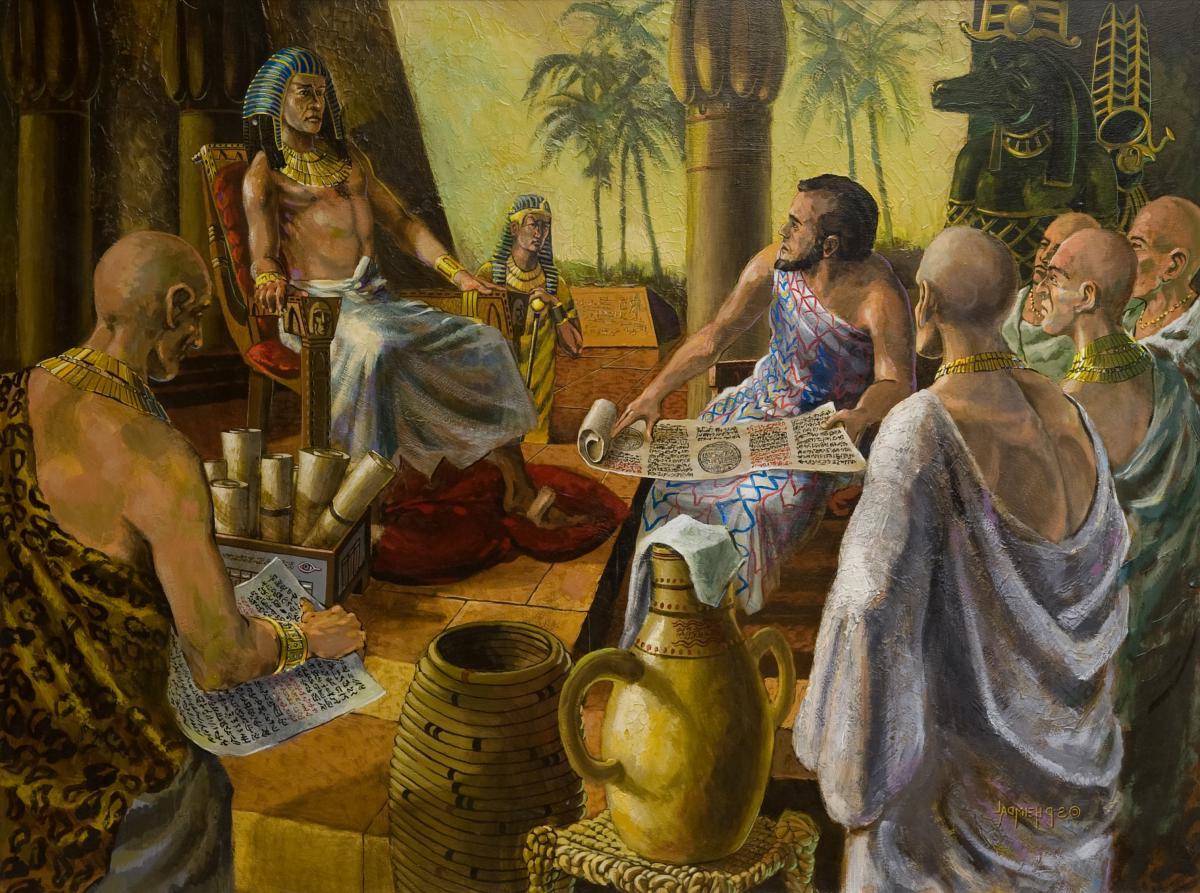
Did you know that ancient Egyptians were pioneers in astronomy? They mapped the stars, created calendars, and even aligned their monumental structures with celestial bodies. Their fascination with the night sky wasn't just for stargazing; it played a crucial role in agriculture, religion, and daily life. Imagine using the stars to predict the flooding of the Nile or to guide the construction of the Great Pyramids! The Egyptians' astronomical knowledge was so advanced that it influenced later civilizations. From the zodiac to the concept of a 365-day year, many of their discoveries still impact us today. Ready to dive into the wonders of Egyptian astronomy? Let's explore 45 intriguing facts that highlight their celestial expertise.
Key Takeaways:
- Ancient Egyptians were pioneers in astronomy, creating a 365-day calendar based on stars like Sirius. Their observations influenced religion, agriculture, and architecture, leaving a lasting legacy in modern science.
- Egyptian astronomy deeply impacted daily life, from predicting the Nile's flooding to inspiring art and literature. Their precise monuments and star charts continue to fascinate and inform our understanding of history.
Ancient Egyptian Astronomy: A Glimpse into the Past
Ancient Egyptians were pioneers in the field of astronomy. Their observations and interpretations of celestial bodies were deeply intertwined with their culture, religion, and daily life. Here are some fascinating facts about Egyptian astronomy.
-
The Egyptians were among the first to develop a calendar based on the stars. They created a 365-day calendar by observing the heliacal rising of Sirius, the brightest star in the sky.
-
Sirius, known as Sothis, was crucial to their agricultural calendar. Its appearance marked the annual flooding of the Nile, which was essential for farming.
-
The Great Pyramid of Giza is aligned with the stars. Its sides are closely aligned with the cardinal points, and it is thought to be oriented towards the constellation Orion.
-
Orion was associated with Osiris, the god of the afterlife. The alignment of the pyramids with Orion's Belt was believed to help the pharaoh's soul ascend to the heavens.
-
The Egyptians identified 36 star groups called decans. Each decan rose consecutively on the horizon every ten days, helping them keep track of time at night.
Tools and Techniques in Egyptian Astronomy
The Egyptians used various tools and techniques to study the stars. Their ingenuity in this field is evident from the artifacts and records left behind.
-
They used a merkhet, an ancient timekeeping instrument. This tool helped them measure time by aligning it with specific stars.
-
The palm leaf rib was another tool for astronomical observations. It was used to sight stars and measure angles.
-
Obelisks served as giant sundials. Their shadows helped track the movement of the sun and determine the time of day.
-
The Egyptians had a deep understanding of the solar and lunar cycles. They could predict solar and lunar eclipses with remarkable accuracy.
-
They divided the night sky into 12 hours. Each hour was represented by a different group of stars, known as a decan.
Celestial Deities and Mythology
Egyptian mythology is rich with references to celestial bodies. The stars, planets, and constellations were often personified as gods and goddesses.
-
Ra, the sun god, was one of the most important deities. He was believed to travel across the sky during the day and through the underworld at night.
-
Nut, the sky goddess, was depicted arching over the earth. She swallowed the sun each evening and gave birth to it each morning.
-
Horus, the falcon-headed god, was associated with the sky and the sun. His right eye represented the sun, and his left eye the moon.
-
The Milky Way was seen as a celestial river. It was associated with the goddess Hathor, who was linked to fertility and motherhood.
-
The constellation Draco was linked to Taweret, the goddess of childbirth. This association highlights the importance of astronomy in their daily lives.
Influence on Architecture and Monuments
Egyptian astronomy significantly influenced their architecture and monuments. Many structures were built with precise astronomical alignments.
-
The Temple of Karnak is aligned with the winter solstice sunrise. This alignment allowed sunlight to illuminate the sanctuary during the solstice.
-
The Abu Simbel temples are aligned with the sun twice a year. On these days, sunlight penetrates the temple to illuminate statues of the gods.
-
The Dendera Zodiac is a famous astronomical artifact. It depicts the sky and constellations as seen by the ancient Egyptians.
-
Many tombs were decorated with star charts. These charts guided the deceased in their journey through the afterlife.
-
The Egyptians built observatories to study the stars. These structures allowed priests to make precise astronomical observations.
Contributions to Modern Astronomy
The legacy of Egyptian astronomy continues to influence modern science. Their early observations laid the groundwork for future discoveries.
-
The concept of a 365-day calendar originated in Egypt. This calendar system is still in use today.
-
Their methods of timekeeping influenced later civilizations. The Greeks and Romans adopted many Egyptian astronomical techniques.
-
The study of decans contributed to the development of astrology. These star groups were later incorporated into astrological traditions.
-
Egyptian star charts are some of the oldest known. They provide valuable insights into the history of astronomy.
-
Their observations of Sirius influenced later astronomical studies. The star's periodic appearance helped develop the field of stellar astronomy.
Observations and Discoveries
The Egyptians made numerous observations and discoveries that advanced their understanding of the cosmos.
-
They identified five planets visible to the naked eye. Mercury, Venus, Mars, Jupiter, and Saturn were all known to them.
-
The Egyptians recognized the importance of the North Star. It helped them navigate and align their structures.
-
They observed the precession of the equinoxes. This slow shift in the position of the stars was noted in their records.
-
The Egyptians understood the concept of the ecliptic. They knew the sun's path across the sky and its relation to the zodiac.
-
They recorded the phases of the moon. This knowledge was essential for their lunar calendar.
Astronomy and Daily Life
Astronomy played a vital role in the daily lives of ancient Egyptians. It influenced their agriculture, religion, and social practices.
-
The flooding of the Nile was predicted using astronomy. The heliacal rising of Sirius signaled the start of the flood season.
-
Astronomy was integral to their religious rituals. Temples and ceremonies were often aligned with celestial events.
-
The Egyptians used star charts for navigation. These charts helped them travel across the desert and along the Nile.
-
Astronomy influenced their art and literature. Celestial themes were common in their paintings, sculptures, and writings.
-
They believed the stars were the souls of the deceased. This belief underscored the importance of astronomy in their culture.
Legacy of Egyptian Astronomy
The contributions of Egyptian astronomy have left a lasting legacy. Their achievements continue to inspire and inform modern science.
-
Their star charts are valuable historical documents. They provide insights into ancient astronomical knowledge.
-
The alignment of their monuments showcases their precision. These structures remain marvels of engineering and astronomy.
-
Egyptian mythology has influenced modern culture. Stories of Ra, Osiris, and other deities are still told today.
-
Their calendar system laid the foundation for modern timekeeping. The 365-day year is a testament to their ingenuity.
-
The study of Egyptian astronomy has advanced our understanding of history. It reveals the sophistication of their scientific achievements.
Fun Facts about Egyptian Astronomy
Here are some fun and lesser-known facts about Egyptian astronomy that highlight their creativity and curiosity.
-
The Egyptians believed in a celestial cow. This cow, Mehet-Weret, was thought to carry the sun across the sky.
-
They had a star named "The Indestructible." This star, likely Polaris, was seen as eternal and unchanging.
-
The Egyptians used star clocks. These devices helped them measure time during the night.
-
They believed the sky was a goddess's body. Nut's body formed the arch of the sky, with stars adorning her.
-
The Egyptians had a star named "The Star of Osiris." This star, associated with the god Osiris, was part of their rich astronomical mythology.
Ancient Egyptian Astronomy's Legacy
Ancient Egyptian astronomy left a lasting impact on science and culture. Their observations of the stars, planets, and celestial events were incredibly advanced for their time. They used this knowledge to create calendars, align monuments, and guide agricultural practices. The Great Pyramid of Giza, aligned with the cardinal points, showcases their precision.
Their star charts and records influenced later civilizations, including the Greeks and Romans. Modern astronomy still benefits from their early contributions. The Egyptians' ability to predict celestial events and their understanding of the cosmos were remarkable achievements.
Their legacy continues to inspire astronomers and historians alike. By studying their work, we gain insight into how ancient people viewed the universe and their place within it. The Egyptians' dedication to observing the skies reminds us of the importance of curiosity and exploration in advancing human knowledge.
Frequently Asked Questions
Was this page helpful?
Our commitment to delivering trustworthy and engaging content is at the heart of what we do. Each fact on our site is contributed by real users like you, bringing a wealth of diverse insights and information. To ensure the highest standards of accuracy and reliability, our dedicated editors meticulously review each submission. This process guarantees that the facts we share are not only fascinating but also credible. Trust in our commitment to quality and authenticity as you explore and learn with us.


